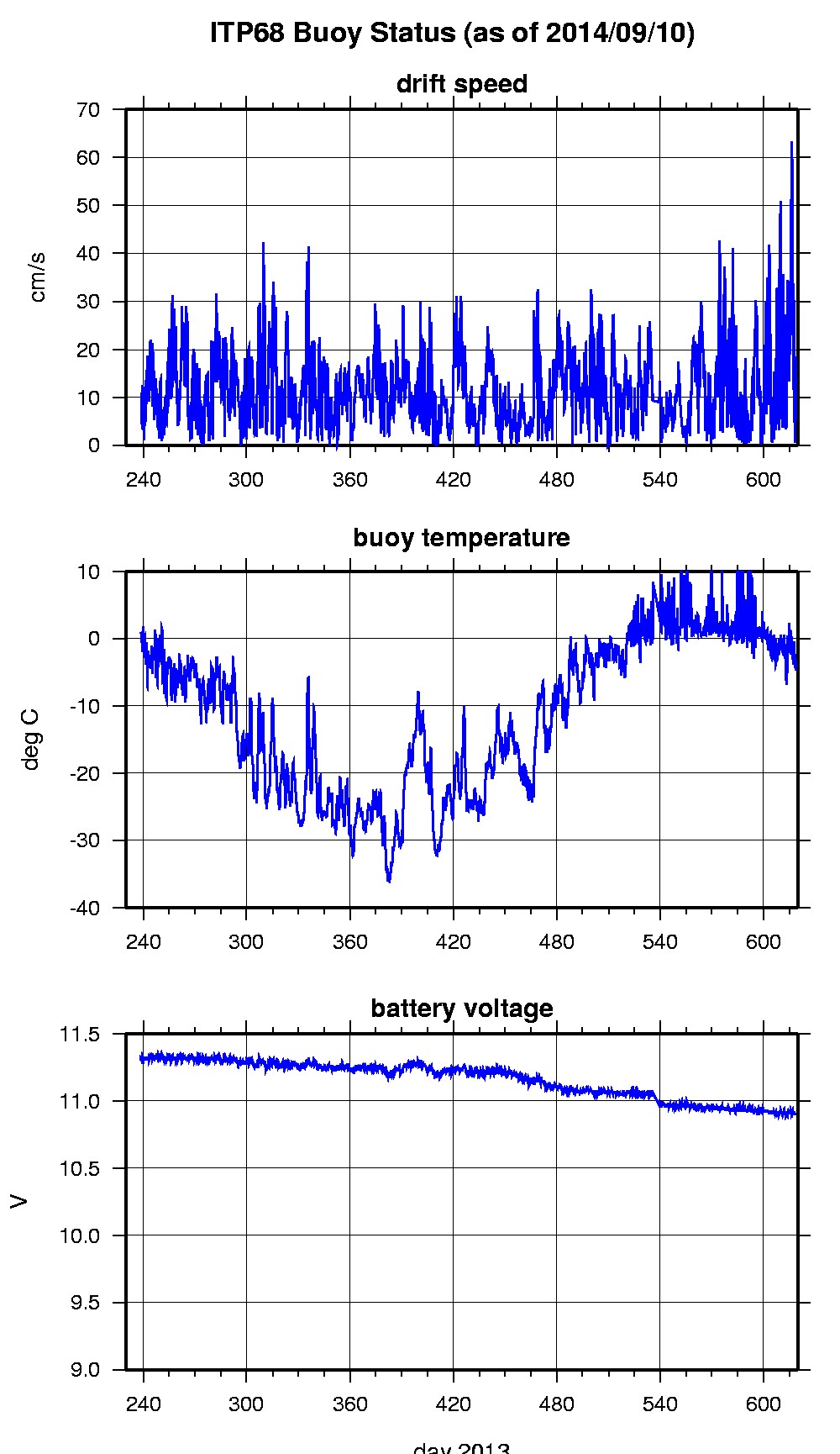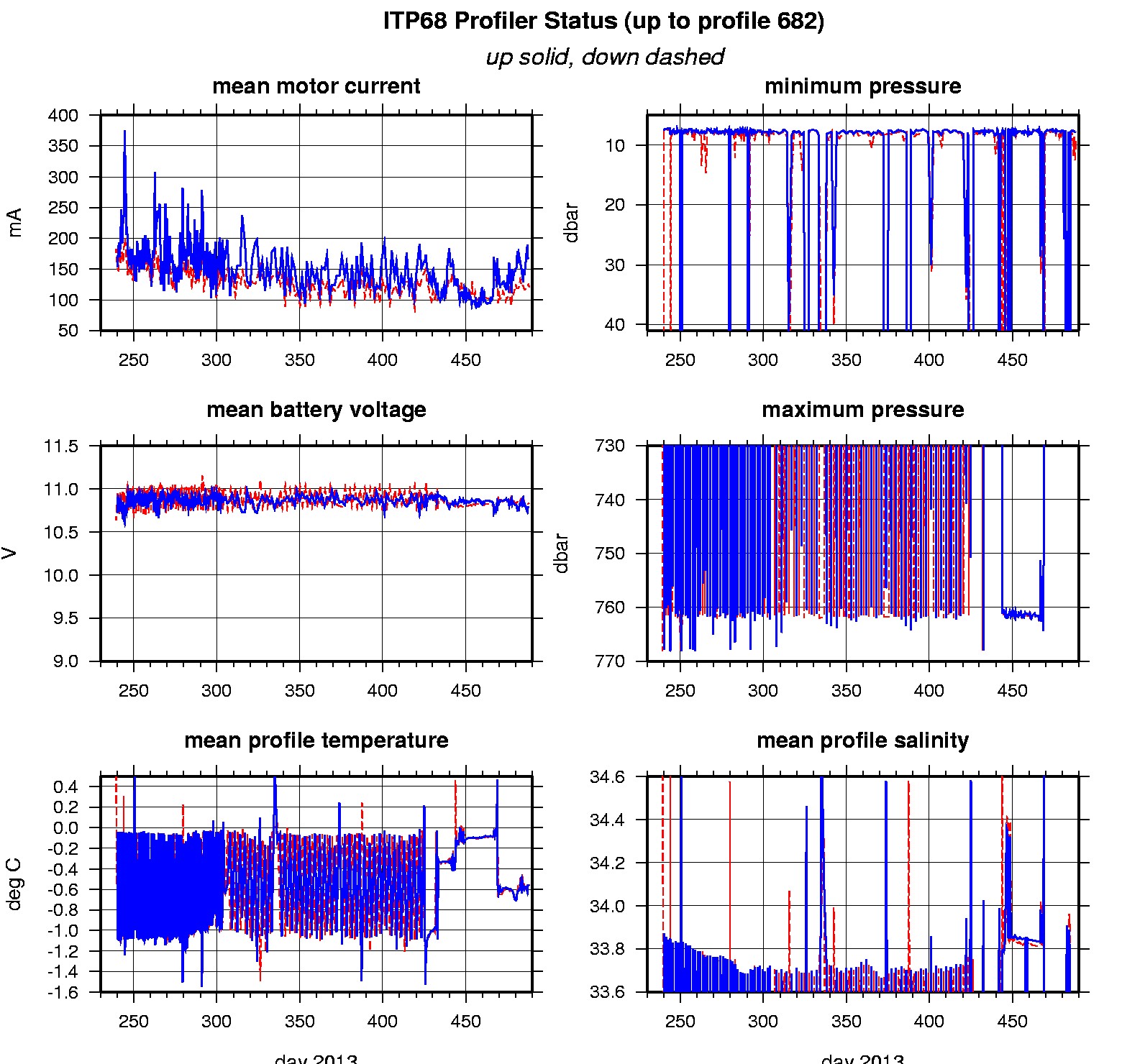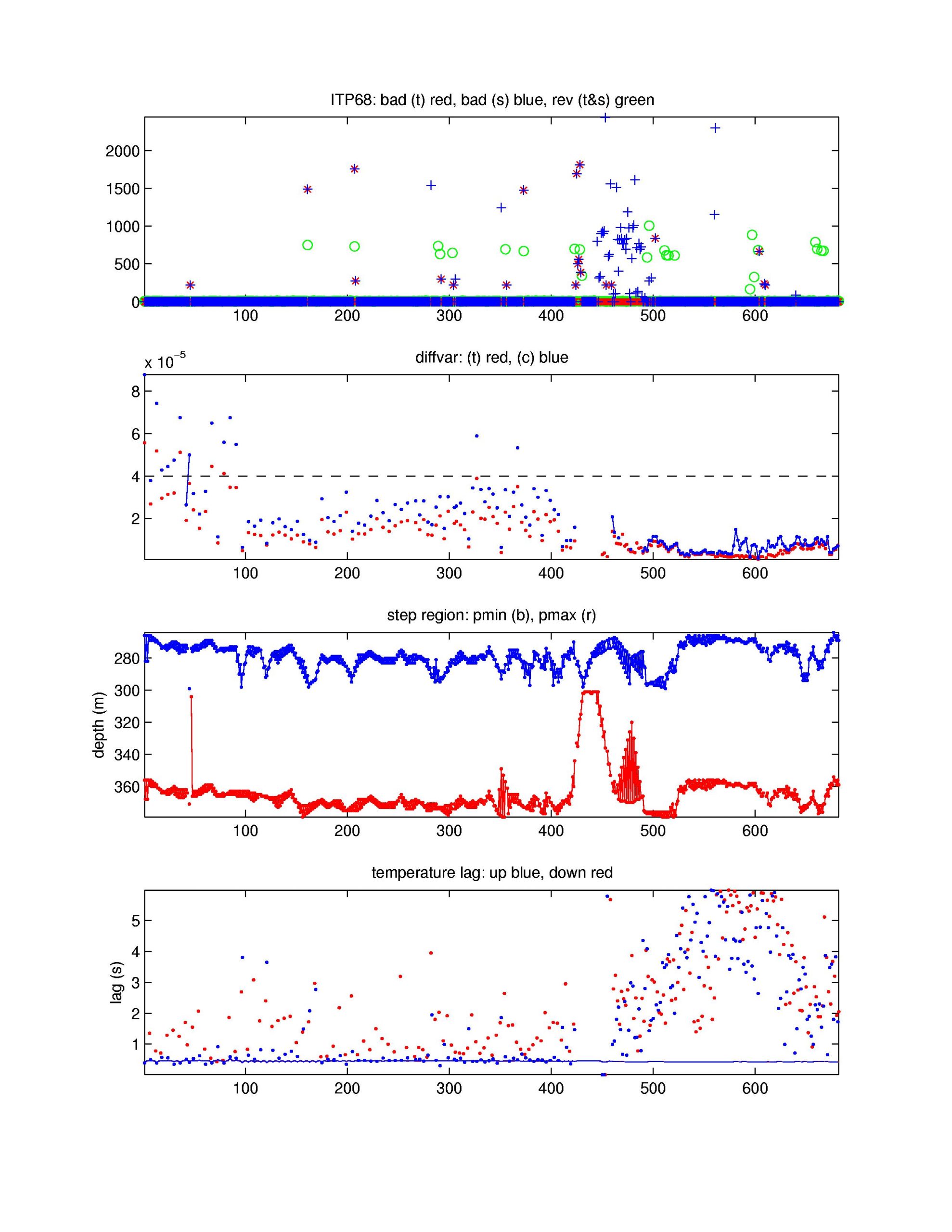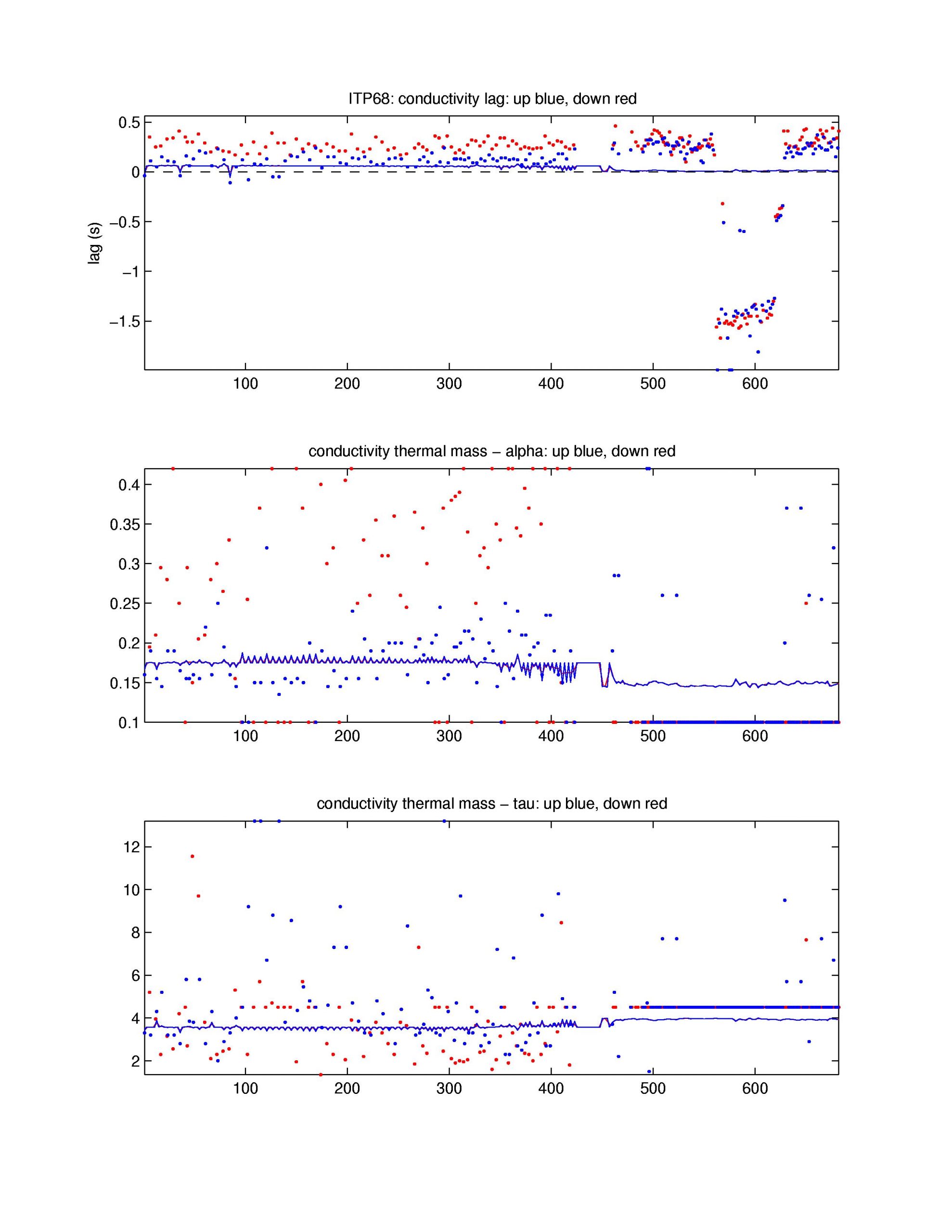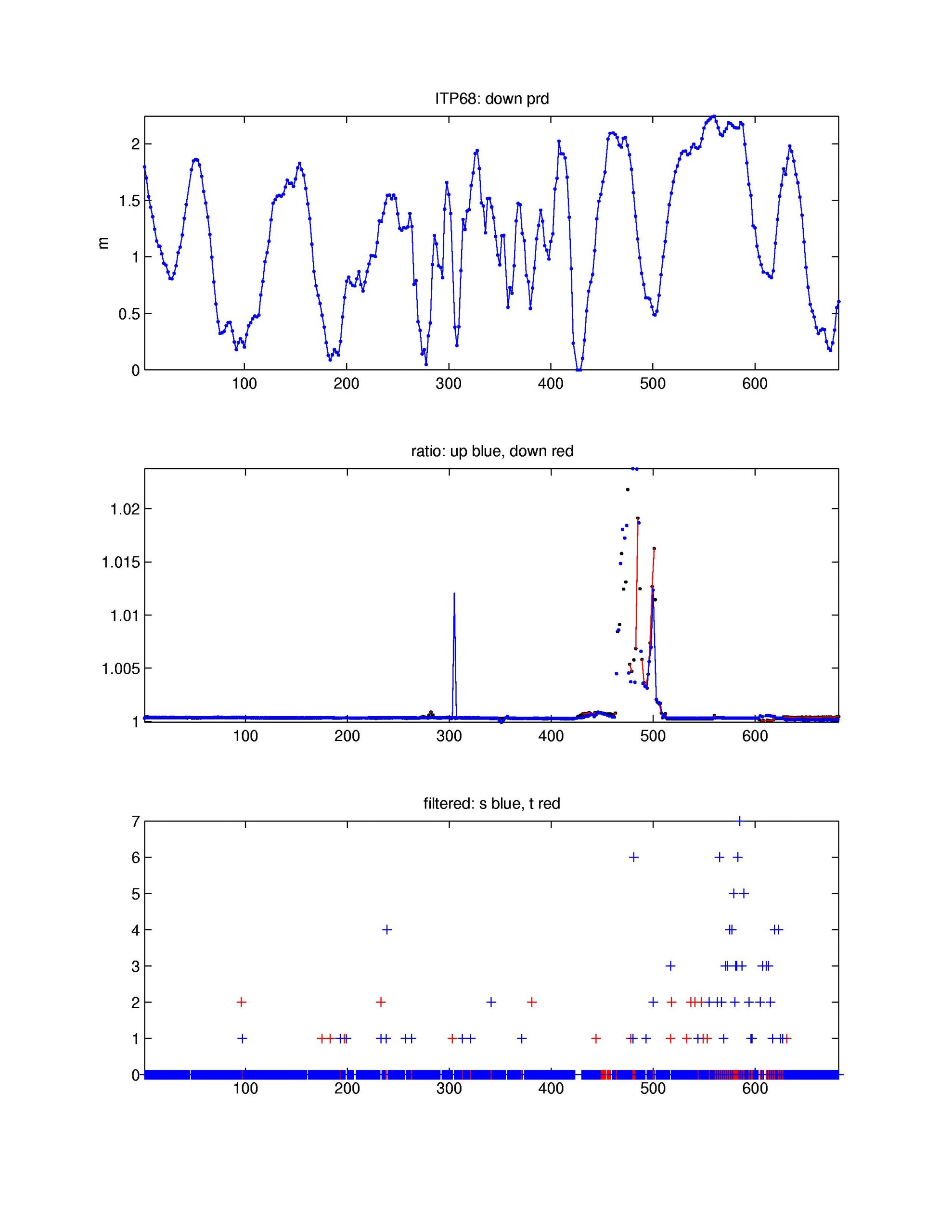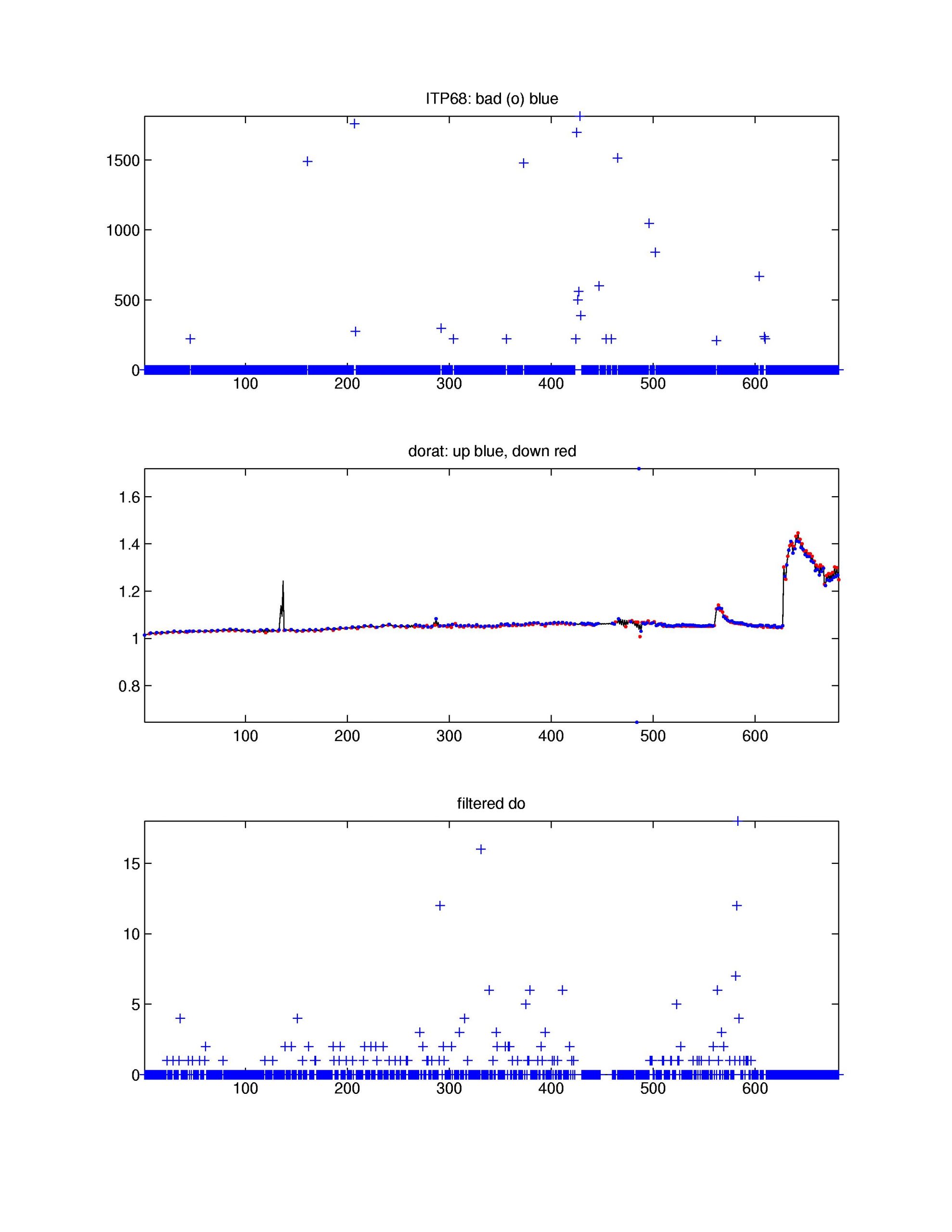Data Processing
The 682 profiles that were transmitted from the ITP were processed according to the procedures described in the ITP Updated Data Processing Procedures. The processing parameters for the CTD and dissolved oxygen data are shown in the figures to the right. The biosuite sensor failed and provided no data, while SAMI data validation are described in Islam et al., (2017).
Lag correction estimates for the CTD and dissolved oxygen were in typical ranges where thermohaline staircases were detected, but were largely interpolated over most of the time series. The dissolved oxygen sensor data profile-to-profile corrections were larregly constant, but increased significantly at the end of the series. The SAMI sensor provided good time series of temperature, salinity and dissolved oxygen at 6 m, but the pCO2 were deemed to be bad in post processing.
See the Data Products tab to the left for descriptions of the three levels (I, II, III) of data processing and to access all data.
References:
Islam, F., M.D. DeGrandpre, C.M Beatty, M.-L. Timmermans, R.A. Krishfield, J.M Toole, and S.R. Laney, 2017. Sea surface pCO2 and O2 dynamics in the partially ice-covered Arctic Ocean. Journal of Geophysical Research, Vol. 122, doi:10.1002/2016JC012162.
